Reveni Labs has released upgraded versions of both the Shoe-Mount Light Meter and Spot Meter. Created in Canada by Matt Bechberger, both meters are 3D printed with high-quality nylon and come with a range of features including exposure compensation, aperture priority mode, and shutter priority mode.
So what’s new? Let’s start with the $130 (CAD) Shoe-Mount Light Meter. This sub-25mm 3D printed light meter now has a USB rechargeable NiMH battery with a 10-hour continuous lifespan. It’s slightly bigger than the previous version but still retains its compact size at 24.4mm x 24.6mm x 25.1mm. There are whole, half, and third-stop increment options now and the 3D-printed housing has been vapour smoothed.
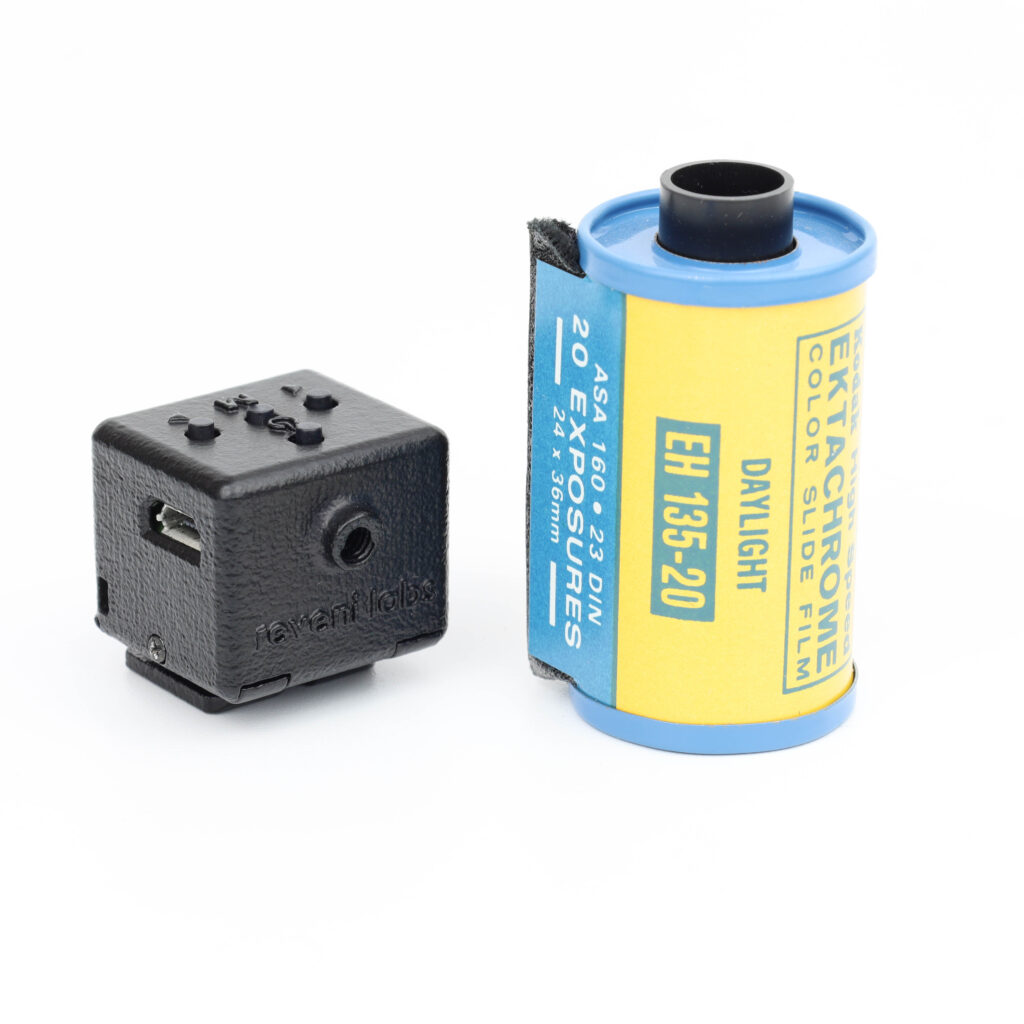
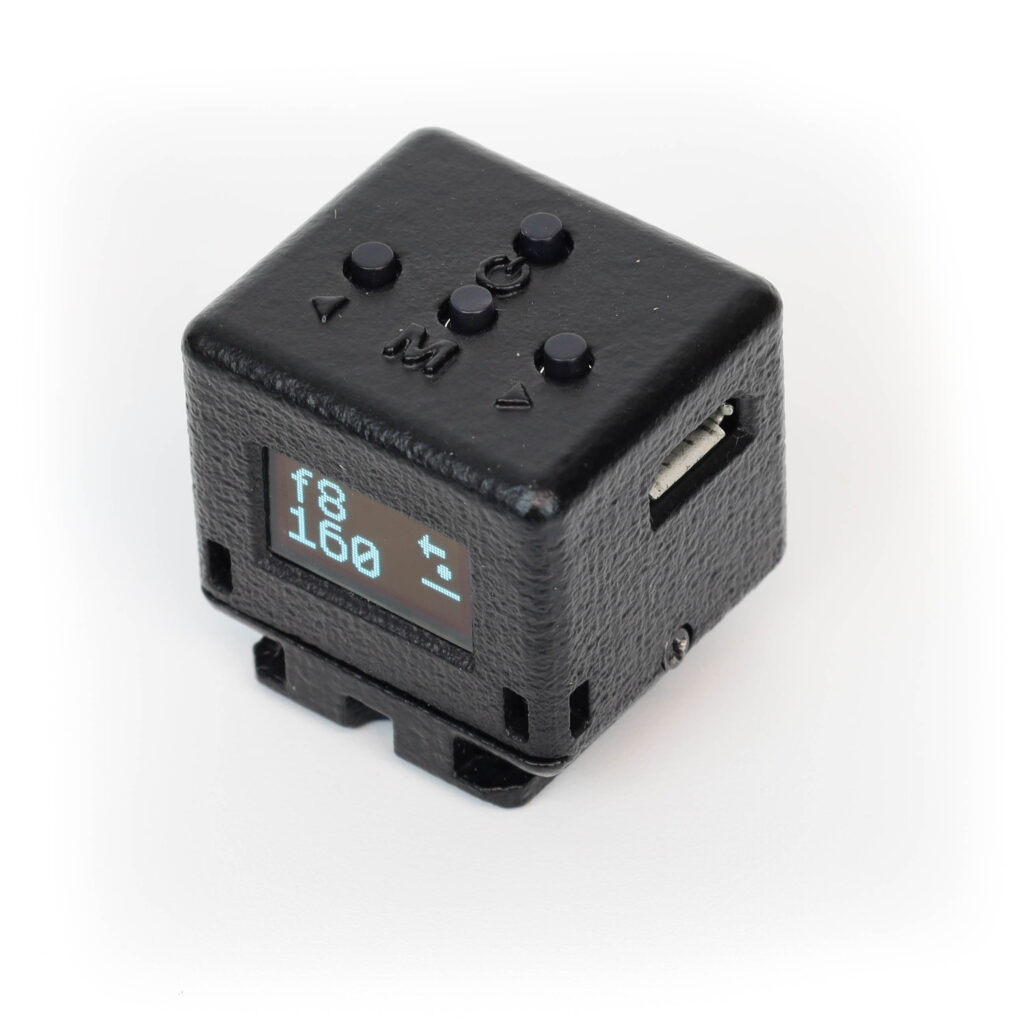
The Shoe-Mount Light Meter MK2 works with a 45-degree field of view using centre-weighted reflective metering. On the back, there is an OLED display with a simple menu and button controls. The exposure compensation can be set in third stops from -2 to +2. This tiny package is designed with an integrated flash shoe mount which can be set on hot or cold shoes. Depending on what kind of camera you have, Reveni Labs also makes adjusters for thick camera shoes.
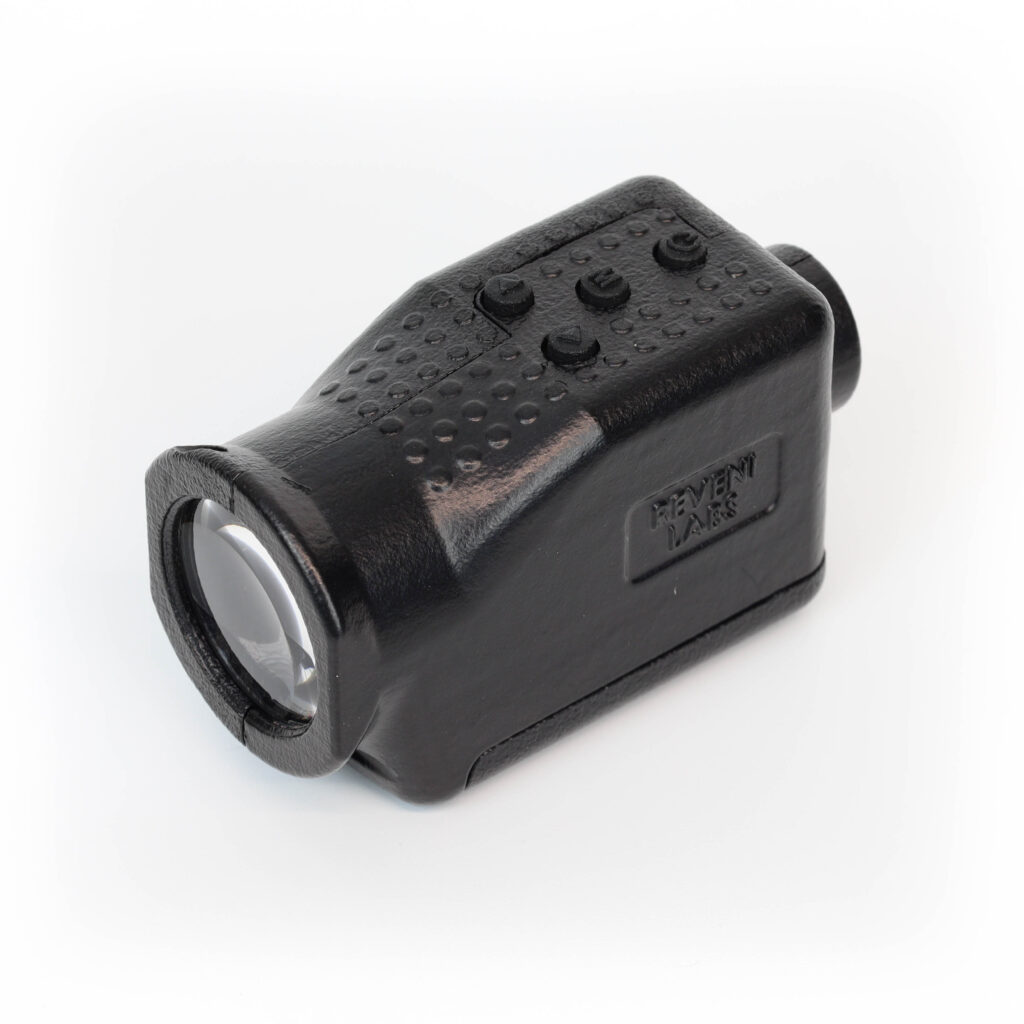
The Spot Meter has been adapted to take AAA batteries only, something which Reveni Labs creator, Matt B. says is much more reliable. It works with alkaline AAA batteries with also rechargeable NiMH AAAs. Additionally, a new processor has been implemented speeding up the startup time. The 3D printed housing for the Spot Meter has also been vapour smoothed and the Mark 2 version will retail for $245 (CAD).
Where the Shoe-Mount Light Meter has an external OLED display, the Spot Meter has an internal one that works with a two-eye aiming technique. The spot metering system works with a (~1.5 degree) 15cm circle at 6m. Metering mode options include single, 2-spot average, zone, and precision. Weighing in a bit heavier than the Light Meter at 40g, the Spot Meter is designed to be worn around the neck or wrist or loose and comes with a neck strap and a carry pouch.
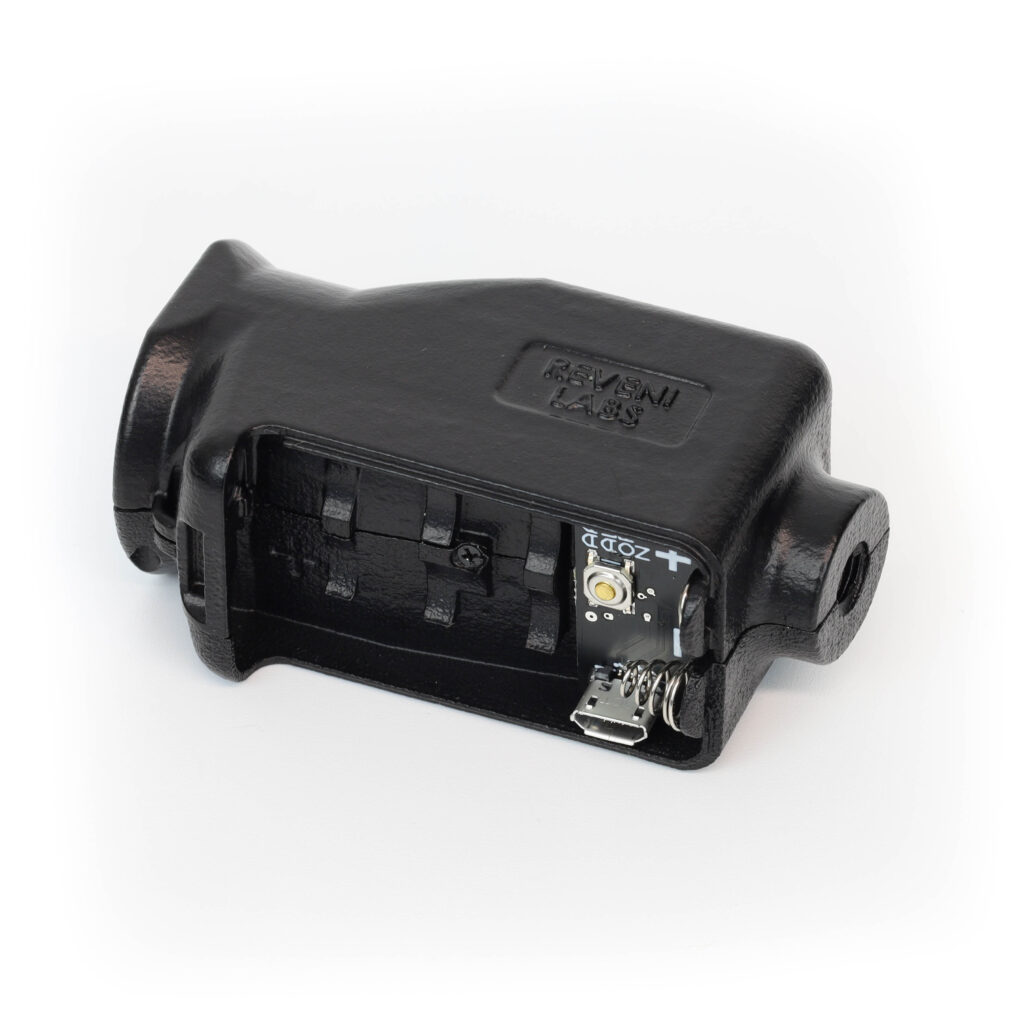
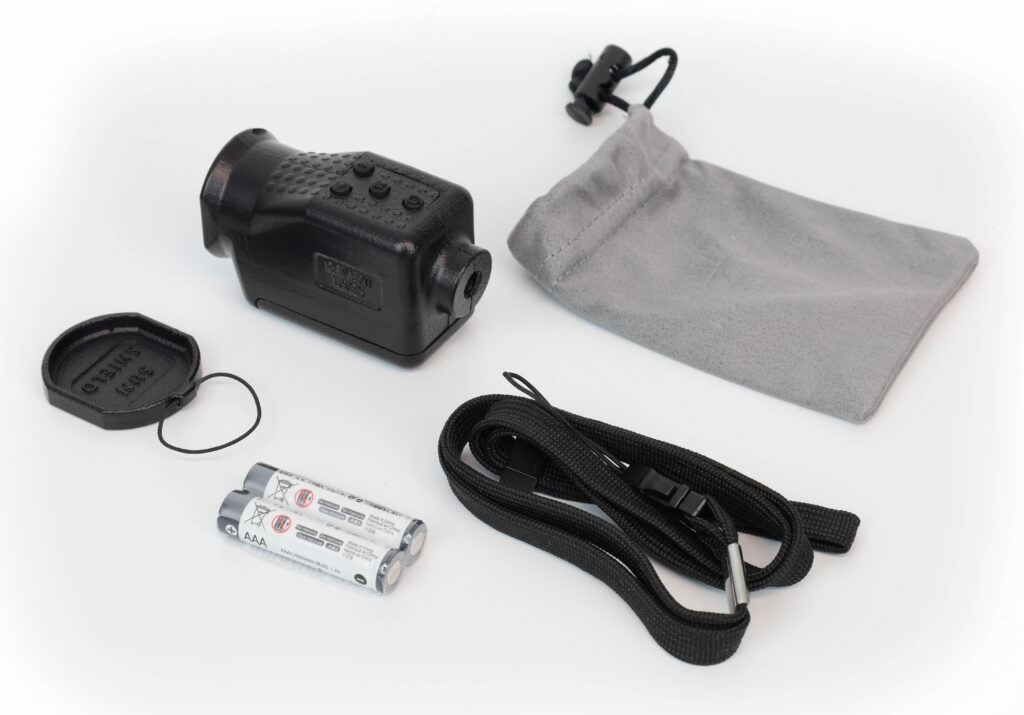
Both products can run through the same ranges of shutter speeds, apertures, and ISO. Shutter speeds can be set from one hour to 1/8000th sec. The aperture ranges from F0.7 to F1024. ISO values range from ISO 1 to 12800. EV ranges from 2 to 20 in 0.1EV (at ISO 100).
Matt shared additional insight with us about the process of updating both products and the goals he had for the second generation of these light meters.
“I was happy with most other aspects of the designs, except for the batteries. The goal of the re-designs was to eliminate the coin cell batteries I used in the original designs. They did not perform well enough in cold weather and had an overall short lifespan. Using a non-removable NiMH rechargeable battery pack in the Light Meter solved the issue while maintaining the small size and avoiding lithium battery shipping issues. Finding the right balance was difficult but I was able to find the right components, squeeze in a micro USB charging port, and get the design to fit with very only a very minor increase in size.” – Matt Bechberger, Reveni Labs
Matt mentioned he also wanted to convert the Spot Meter to AAA batteries to increase the runtime and performance in cold weather.
To find out more information about Reveni Labs or the upgraded meters, head over to Matt’s website here! Or you can access the individual product pages for the Light Meter here and the Spot Meter here.
Share this post:
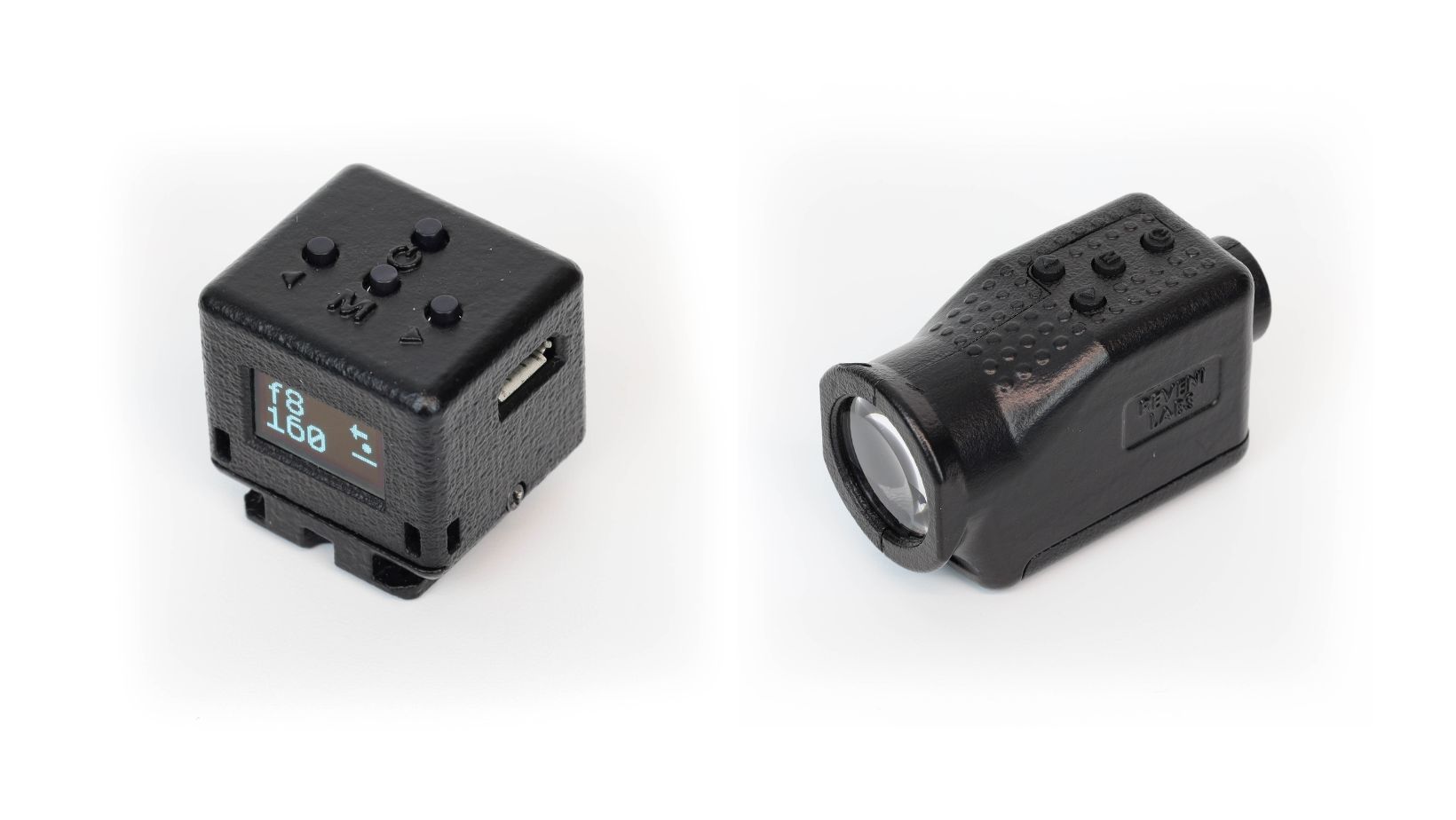








Comments
Gary Smith on NEWS: Reveni Labs Releases Second Generation Shoe-Mount Light Meter and Spot Meter
Comment posted: 01/02/2024
Comment posted: 01/02/2024
Graham Orbell on NEWS: Reveni Labs Releases Second Generation Shoe-Mount Light Meter and Spot Meter
Comment posted: 02/02/2024
I use a Doomo M with an LED readout. But I find the top mounted screen is difficult to read in bright sunlight. ( yes I know about sunny f16)
This new Reveni meter might? be easier to read in sunlight having its screen at the back where it’s possibly less likely to reflect a bright sky and it should also be able to be shielded by a hand. That is as long as its readout is in real time varying depending on where it’s pointed. With the Doomo it’s difficult to shield the screen without blocking its lens. Rechargeable as with the Doomo is an excellent upgrade. Maybe I’ll try it out one day.
Ibraar Hussain on NEWS: Reveni Labs Releases Second Generation Shoe-Mount Light Meter and Spot Meter
Comment posted: 02/02/2024
Comment posted: 02/02/2024
Comment posted: 02/02/2024